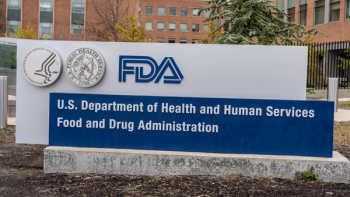
- Pharmaceutical Executive: July 2023
- Volume 43
- Issue 7
Navigating the Recession and Patent Expirations
Pharma is built to overcome, but focus on fundamentals remains key.
The perennial nature of life sciences protects the sector from adverse macroeconomic conditions. We have tested this hypothesis by examining 40 years of trends, learning that downturns have a limited impact on growth.
But now, will the current economic environment, with a potential recession looming, challenge this resilience? Further, can the biopharmaceutical industry weather the storm caused by a massive wave of patent expirations of biologics assets?
Steady growth amid the headwinds
Even if inflation limits consumer spending, the number of dispensed prescriptions has shown an annual increase of 3.4% from 1992 to 2021, according to IQVIA. This is due to an aging population, more diagnoses, and new therapeutics, leading to a perpetual demand for pharma products. Additionally, Congressional Budget Office data shows that the average cost per prescription remained flat or declined slightly in the last 10 years, explained by pricing pressures and increased use of generics.
A key measure of resiliency is continued R&D spend and the number of clinical trials in Phases I–III, and both measures have increased in recent years. In fact, according to an analysis of data at ClinicalTrials.gov and Capital IQ, the number of clinical trials has increased 191% since 2012, and R&D as a percent of sales is up 15% over the same period. This indicates that the biopharma research engine is unaffected by recent downturns.
Further, this focus on innovation has helped lead to an increase in FDA approvals of both new molecular entities (NMEs) and biologics license applications (BLAs), which reached a median of 41 per year from 2010 to 2021 vs. 26 per year in the previous decade. The dot-com bubble burst saw a slight rise in approvals, up to 29, and stayed relatively consistent through the 2008 financial crisis (25 approvals). During the first major wave of COVID-19 in 2020, an unprecedented 53 NMEs were approved.
Additionally, according to data from the Bureau of Labor Statistics and the Pharmaceutical Research and Manufacturers of America (PhRMA), the life sciences workforce has grown at a faster rate than the overall US labor force over the past 15 years: 1.5% CAGR vs 0.6% CAGR, reaching 1.14 million in 2022. The only slight dip was from 2008 through 2011—the period of the notorious $100 billion small-molecule patent cliff.
Patent cliff to test industry resilience
While the industry has shown resiliency, it currently faces major challenges: inflationary pressures on out-of-pocket prescription spending; increased cost of capital; near-shoring of the supply chain; and tight margins from rising labor costs. On the top end, revenue is being squeezed by the Inflation Reduction Act and the patent cliff, estimated by Evaluate Pharma at $226 billion in lost global prescription sales through 2026.
Still, the industry cannot afford to dial back on R&D. For companies with a strong balance sheet and cash flow, a downturn may facilitate acquisitions for growing therapeutic areas. In the January 2023 EY CEO Outlook global survey, 47 life sciences CEOs said cost reduction to maintain profitability would be an important near-term priority.1 When investing, firms are prioritizing digital transformation, resilience, sustainability, and operational efficiencies, aiming to exit the downturn stronger than their competitors.
At the same time, the industry should address its long-overlooked cost base. Over the last decade, according to CapIQ and EY analysis, the selling, general, and administrative expenses (SG&A) level has remained steady at around 28.8% of revenue. Today’s intelligent automation and outsourcing capabilities are on full display in other industries, and while biopharma is a pioneer in innovation, its adoption of digital tools has lagged. Automation of back-office processes and using shared services can lower SG&A spend and, in turn, reduce costs, allowing companies to fund continued innovation.
For life sciences companies, the economic environment is among the most challenging in decades, and the impending patent cliff will be difficult to overcome. However, biopharma has historically proven to be resilient to macro challenges and recovered from its first patent cliff with a surge in innovation. Focusing on fundamentals, such as new therapeutic modalities, acquiring novel technologies, and using automation, artificial intelligence, and machine learning to lower its cost base, will help the industry navigate the path ahead.
References
- EY. CEO Survey: US CEOs Brace for a Recession of Unknown Magnitude, Jan 12, 2023, https://www.ey.com/en_us/ceo/ceo-survey-us-report
Articles in this issue
over 2 years ago
Crossing the Brain Barrierover 2 years ago
Biotech’s Survival Story: Companies Bear Down for Lean Yearsover 2 years ago
Harnessing AI for Pharma Salesover 2 years ago
Tapping New and Improved Drug Innovations in Asiaover 2 years ago
Drug Shortages Continue to Plague FDA, Manufacturersover 2 years ago
Contrasting Aims Highlight Pharma Reform Pursuitsover 2 years ago
Shifting Macro Trends Offer Hope for Biotech Performance BoostNewsletter
Lead with insight with the Pharmaceutical Executive newsletter, featuring strategic analysis, leadership trends, and market intelligence for biopharma decision-makers.




